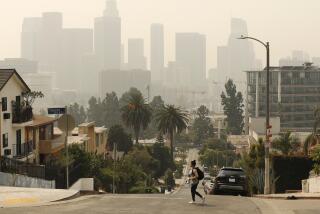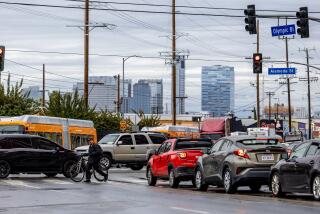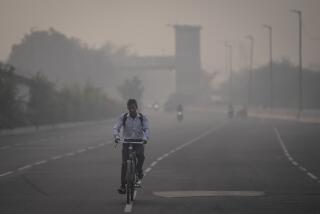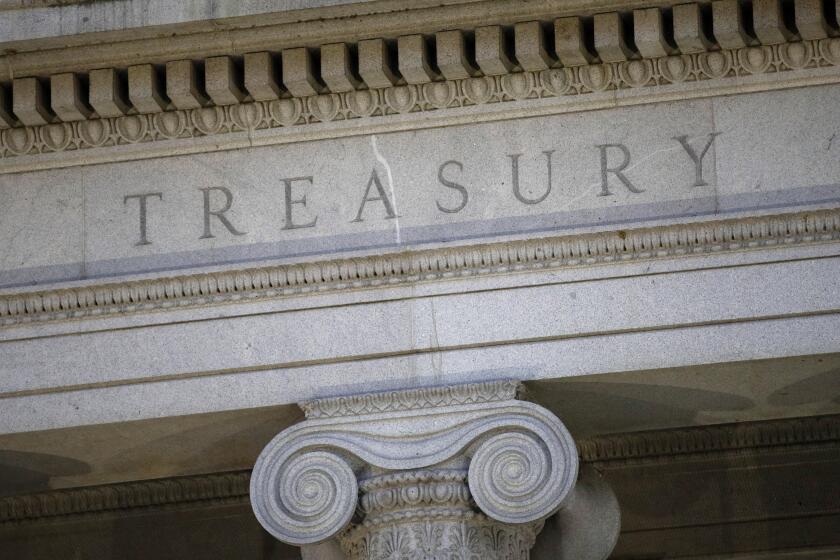Paris chokes on pollution; City of Light becomes City of Haze
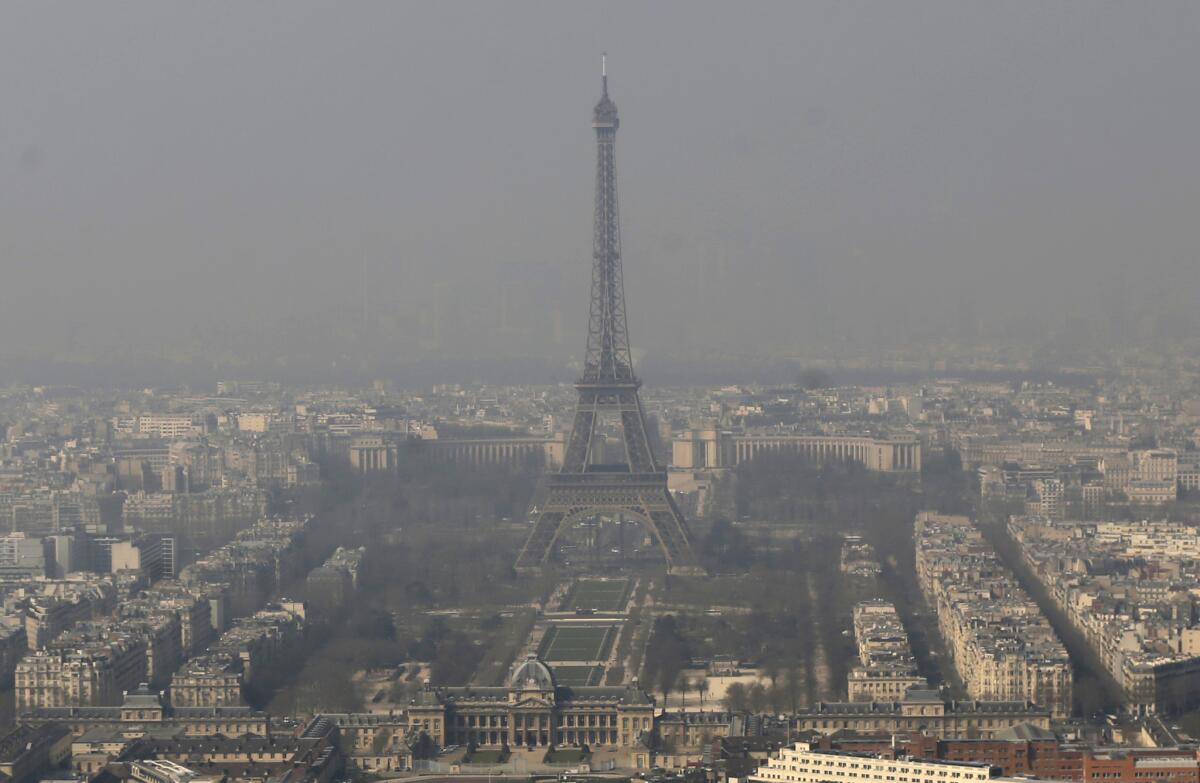
Nine-year-old Lily Martin has been coughing for most of the last three weeks. From morning to evening and most of the night, it has been hack, hack, hack. She is pale and exhausted. Her mother, Sophie, is worried sick.
The child is not the only one suffering. All over Paris, people are coughing, wheezing and sniffing as a spike in air pollution has made the French capital one of the smoggiest cities in the world.
For one day last week, in fact, air quality in Paris was reported to be the worst among major global cities -- a distinction usually associated with Beijing or New Delhi.
The haze enveloping Paris, which usually enjoys relatively clean air for a city its size, has prompted warnings to the young and elderly to avoid even moderate exercise. Schools have been instructed to keep children in classrooms and limit sports activities.
On Monday, in an attempt to improve air quality, authorities enacted a 24-hour restriction on cars with even-numbered license plates, halving the number of cars entering the city and surrounding areas.
On Wednesday, when the air was at its worst, a toxic, choking haze masked the city’s most famous landmarks, including the Eiffel Tower. Along the city’s grand boulevards, the Champs Elysées and the famous squares -- Bastille, Opera, Republique, Nation -- pedestrians could smell and taste the smog.
On Friday, near Place de la Republique, an optician stood at the door of his store offering passersby cheap cardboard spectacles through which to see a solar eclipse. Most people laughed and walked on; the yellow-tinged gray cloud covering the city meant Parisians would see nothing of the extraordinary event.
Experts say the problem is caused by vehicle emissions, an absence of wind to disperse the pollutants and other meteorological conditions, including sunshine coupled with a drop in temperatures. Those have combined to create a stagnant cover of warm air over Paris, which sits in the Seine basin, a geographic bowl.
Critics have pointed fingers at successive French governments that have promoted diesel vehicles by subsidizing the fuel so that it is about 15% cheaper than gasoline. Though diesel is more fuel efficient and produces less carbon monoxide, it emits nitrogen oxides that react with sunlight to produce low-level ozone and fine soot particles known to cause bronchial irritation and cancer.
In addition to banning cars with even-numbered plates, Paris ordered drivers to adhere to a speed limit of just over 12 mph. About 750 police officers were posted on busy intersections to ensure that drivers stuck to the rules -- and issue on-the-spot, $30 fines for those who didn’t.
To assuage disgruntled drivers, all public transport in and around the city was free, as was residential parking. “Clean” vehicles, including electric cars and those carrying more than three people, were exempted.
It is not the first time countries have resorted to such vehicle restrictions. During the 2008 Beijing Summer Olympics, Chinese authorities introduced the same measure to combat noxious smog levels.
In the United States, the cities of Denver and Phoenix have implemented voluntary no-drive-day campaigns during the winter months when air quality is at its worst, and these have been credited with reducing emissions. Rome, Athens, Mexico City, Santiago, Seoul and Singapore have also used driving restrictions, either voluntary or mandatory, based on alternative odd and even license plates.
The effect of the ban on some of Paris’ busiest roads was evident Monday morning, with at least 30% fewer traffic jams during the morning rush hour, according to the Paris police authority. By midday, more than 2,800 motorists had been stopped and fined, the authority said. City Hall said there were 40% fewer cars on the capital’s roads.
It is only the third time since 1997 that Paris authorities have resorted to such emergency measures. At roughly the same time last year, a similar ban was said to have had a “positive impact” on air quality, reducing the particularly dangerous PM10 particles from diesel combustion and the toxic nitrogen oxides (NOx) according to Airparif, which measures pollution in the capital.
Airparif issued its maximum alert last week, after the carcinogenic PM10 particles (those with a diameter less than 10 microns) topped 80 milligrams per cubic meter and went as high as 120mg. Although the pollution was still “high” on Monday, it was reportedly 30% to 40% lower than at its peak last week.
Ariane Etienne, 25, a Parisenne waitress, said she had escaped to the countryside over the weekend and found she could breathe properly for the first time “in ages.”
“I can feel it in my throat all the time,” she said. “I went to the countryside, and it was such a relief to be able to breathe. The moment I got back to Paris I could feel and smell the pollution again.”
“I woke up this morning and my nose was blocked once more,” she added. “But what can you do when you live and work in Paris? There’s no escape from it.”
For Lionel Pailles, an author and expert on luxury perfumes and an asthma sufferer, there is a sense of frustration over the pollution.
“I find it terrifying that for many years the city authorities have put things into effect that should have reduced the pollution,” he said. “We’ve had the Velib bicycle scheme and Autolib [free car program]; we’ve had improvements in public transport with the metro running later at night, but we still cannot breathe, and we’re able to breathe less and less well in this city.”
“I suffer from occasional asthma attacks, but for the first time in ages I’ve had them two or three days in a row,” Pailles said. “It’s frightening.”
Martin Pietz, a German photographer who has lived and worked in Paris for 27 years, said the air quality made cycling to his office a challenge.
“I first noticed it was particularly bad about three months ago, and since then it’s got worse, particularly in the last week. On my bike, I felt like the air was being cut off and I couldn’t breathe,” he said.
“Before when I used to get a cough it would last two weeks. Now it lasts two to three months and just won’t go.”
The emergency ban in Paris sparked a political row between the ecology minister, Ségolene Royal, and Mayor Anne Hidalgo, both from the governing Socialist Party. Hidalgo wanted the driving restrictions introduced days ago, but was overruled by Royal. By Monday afternoon, Royal announced the ban would not be extended a second day, while Hidalgo warned she would demand it be reimposed if air quality dropped further.
Etienne doubted a one-day ban would help the city breathe more easily.
“I can’t really notice much of a difference even though there is less traffic,” she said. “One day of half traffic isn’t enough. It needs to be done regularly, like in Rome.”
Willsher is a special correspondent.
More to Read
Start your day right
Sign up for Essential California for news, features and recommendations from the L.A. Times and beyond in your inbox six days a week.
You may occasionally receive promotional content from the Los Angeles Times.
